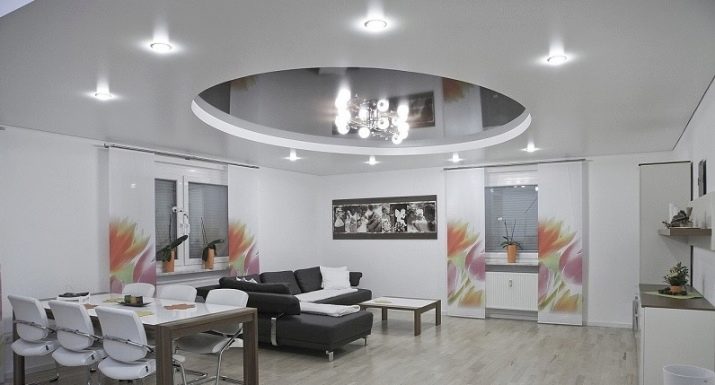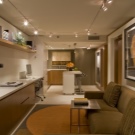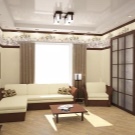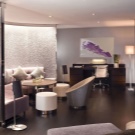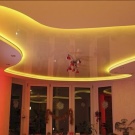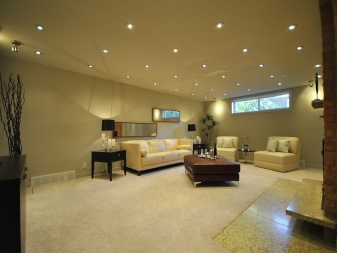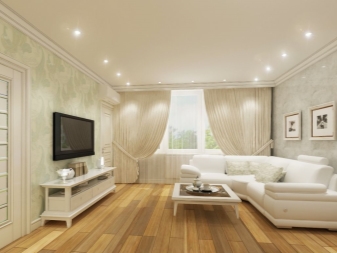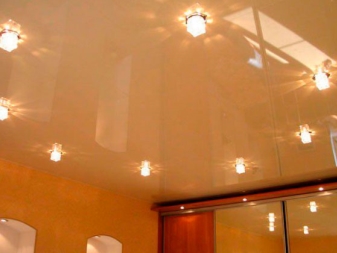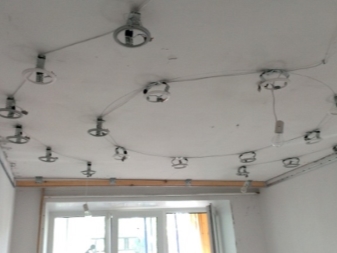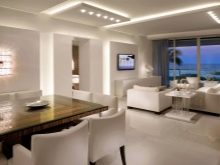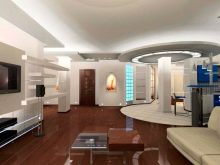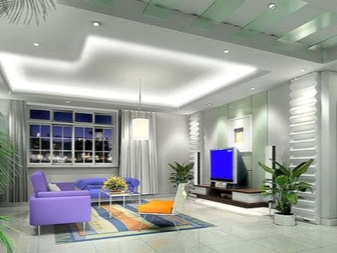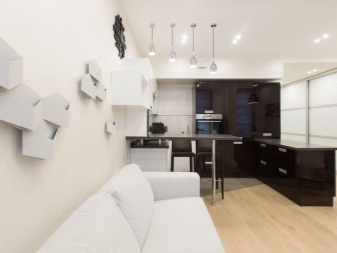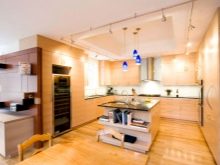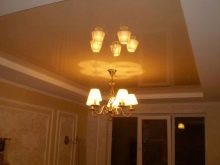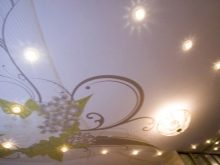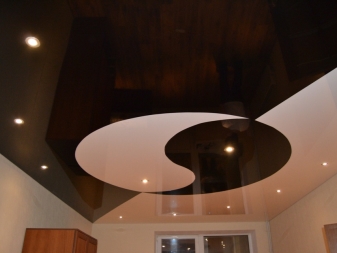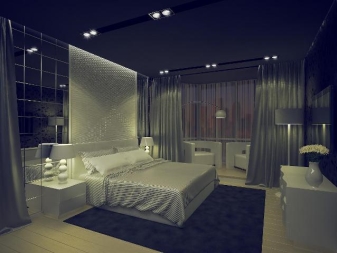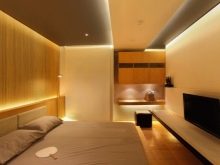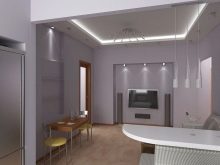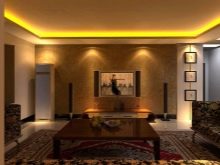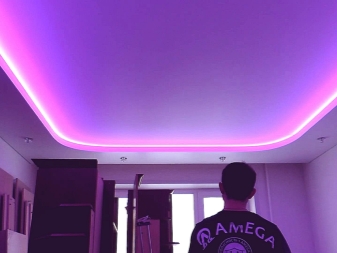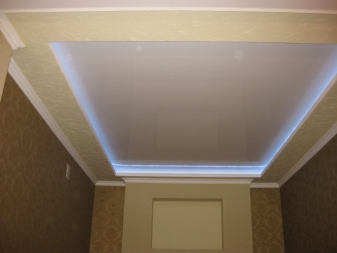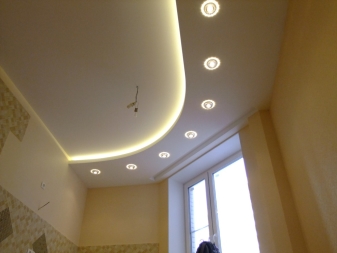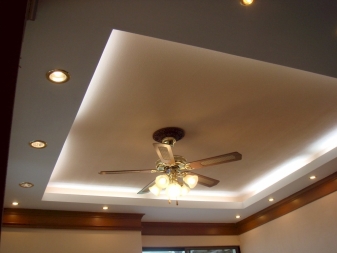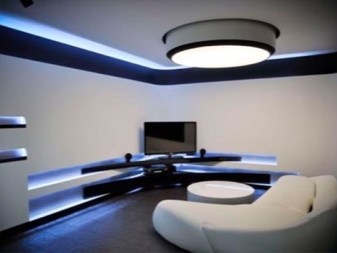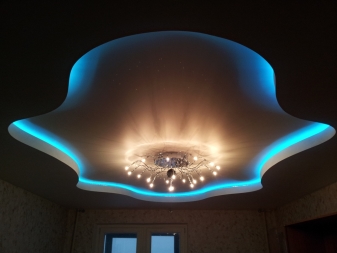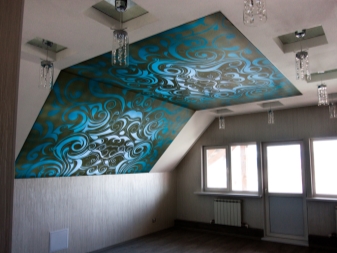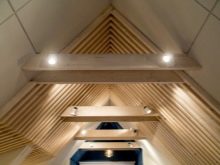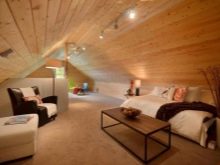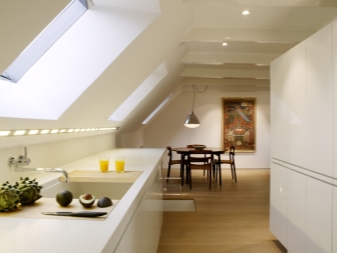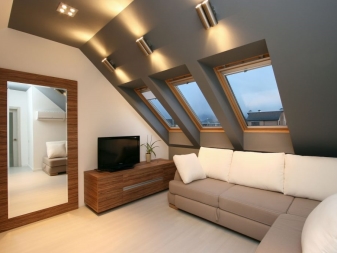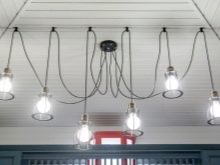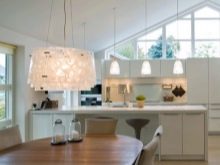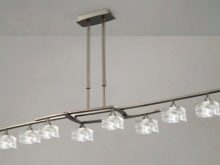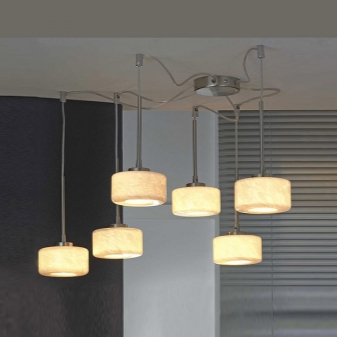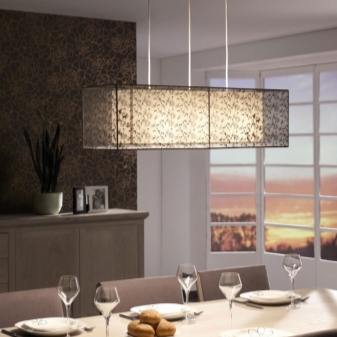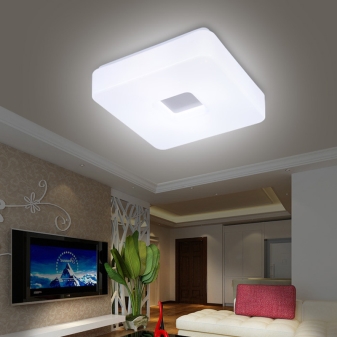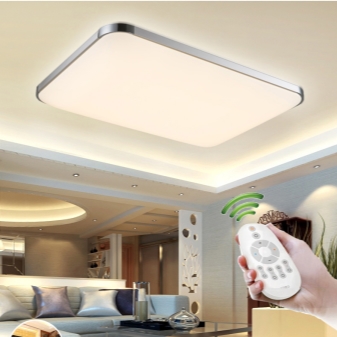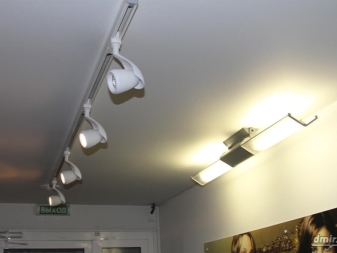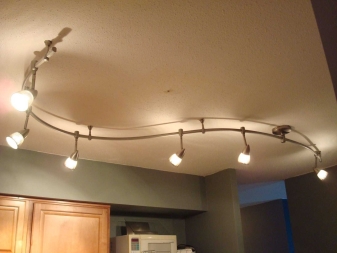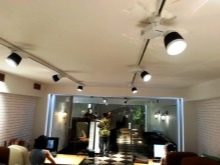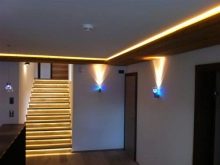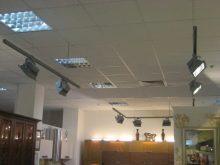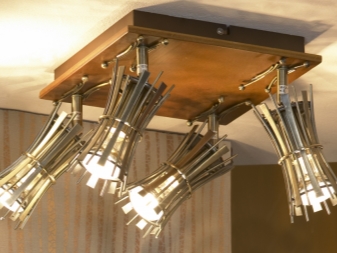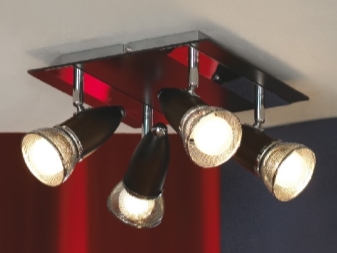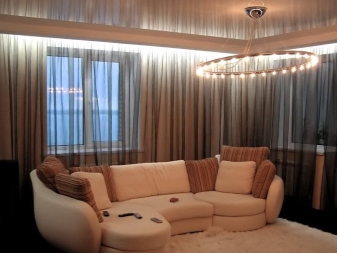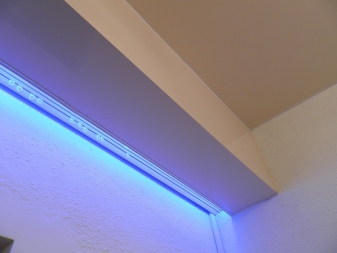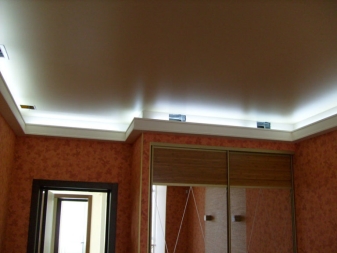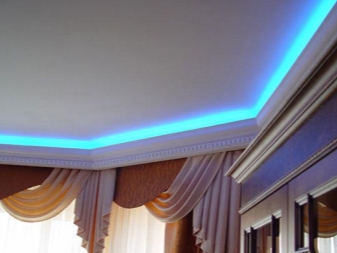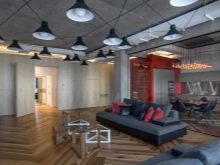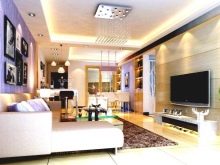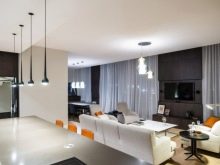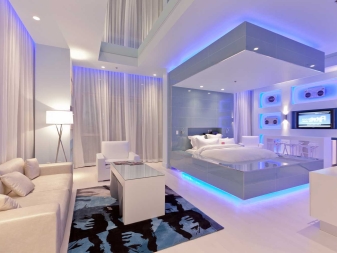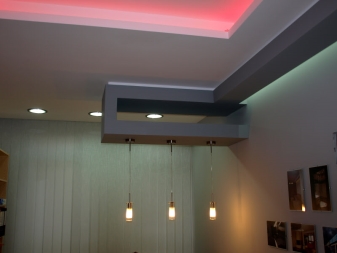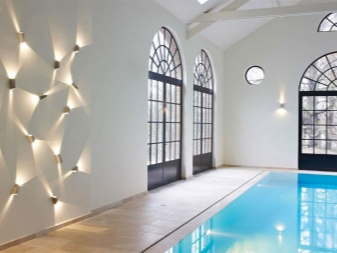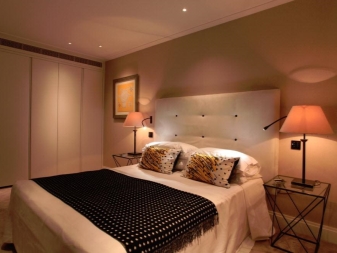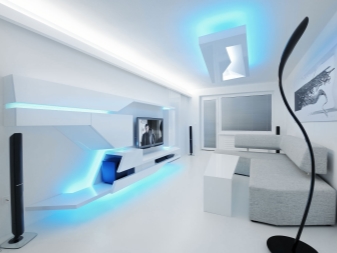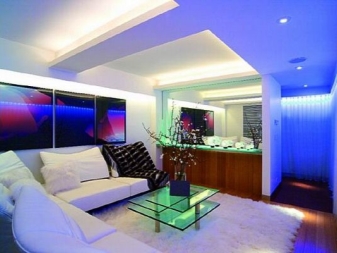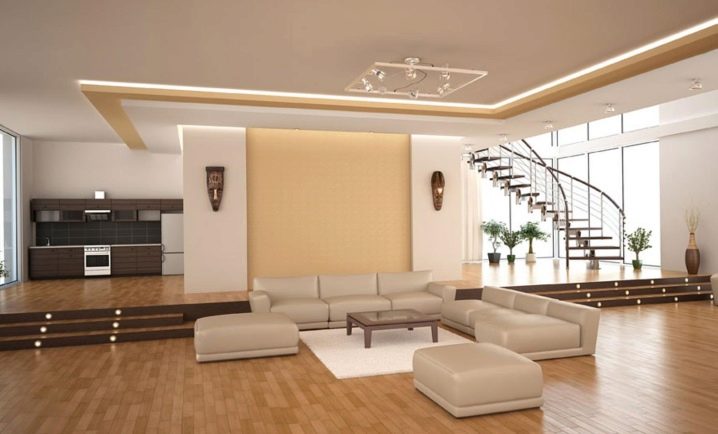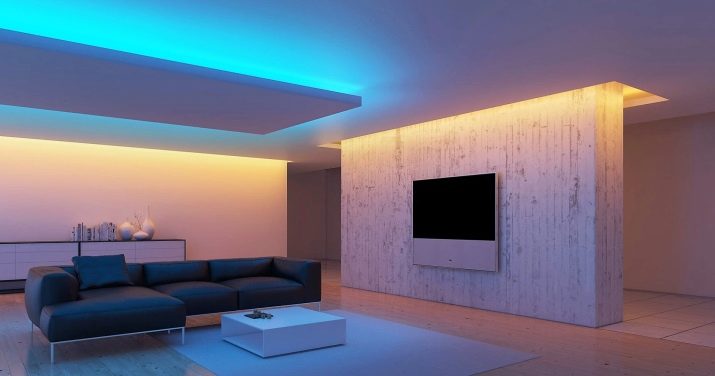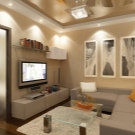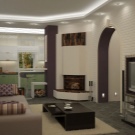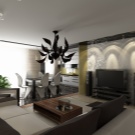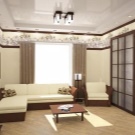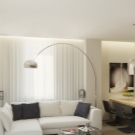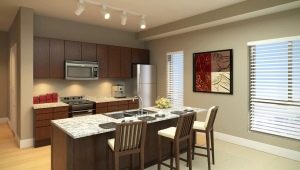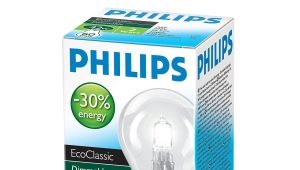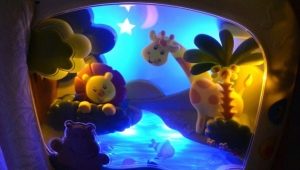Ceiling lighting
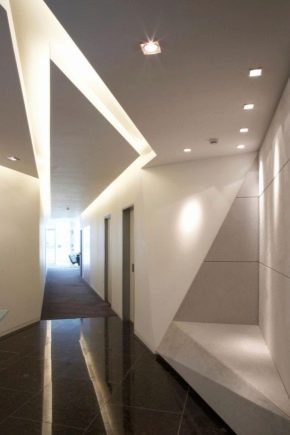
Ceiling lighting not only helps illuminate the room, but is also responsible for the preservation or refraction of its proportions. If you pick the light wrong, you can completely ruin the whole picture. Due to the specifics of the ceiling cover, there are several different ways of lighting, which we will now try to understand.
Special features
Ceiling lighting is selected individually for each room, depending on its features. For example, to make lighting correctly for low ceilings or for beamed ceilings, you need to use two completely different approaches. In the first case, it is preferable to install integrated lighting,as it will visually add height, and in the second - to emphasize the two-level ceiling with the help of a chandelier in a rustic style or a loft, depending on the style of the room.
Now it is fashionable to highlight the ceiling around the perimeter of the room, but this is not always appropriate. Sometimes it is much better to replace hidden ribbon illumination with LED spotlights, especially if the room is large. So you can achieve a uniform level of illumination in every corner.
To take into account all the possible nuances, you certainly need to plan the location of the ceiling lights in advance. This is especially important, since few ceiling structures can immediately “tune in” to the momentary desires of the owners. For example, in the case of suspended ceilings, if you do not lay the wiring in advance, the whole canvas will have to be tugged. The specificity is such that for the location of the luminaires the ceiling needs to be strengthened and glued in the right places, and all these procedures are carried out before it is fixed.
How to arrange?
The correct location of the ceiling lights is the key to the success of a beautiful organization of space.To do everything right, you need to make a plan-drawing arrangement of furniture at the initial stage of repair. So you will know exactly where you need to increase the light, and where on the contrary, slightly dim the space.
Usually when positioning the ceiling lights, the following rule is used: underline the lighting needs all the important details. It can be a composition of photographs on the wall, a reading chair, a dining table, at which the whole family gathers - anything. If you know in advance where you plan to put a sofa or hang a mirror, planning will become much easier.
If you plan to install not only a single ceiling chandelier, you can not leave thinking about the location of the backlight for later. This is fraught with damage to the entire room due to incorrect light accents.
Options for stretched canvas
For suspended ceilings, three types of ceiling lamps are used: a pendant lamp, recessed lighting or lighting around the perimeter. The latter option is especially common for plasterboard ceilings, as it allows to emphasize an interesting multi-level composition.
A hanging lamp can be located even in the middle of the room, at least in several places. It is not forbidden to use several different types of chandeliers. This is done with the aim of dividing the space into zones, especially when it comes to large studio apartments. When choosing lamps for chandeliers, it should be noted that their power should not be more than 40 W, if the lamp is close to the ceiling, otherwise the ceiling fabric can be deformed.
Recessed spotlight is good for highlighting any details, as well as for creating the illusion of "light directly from the ceiling." Please note that spotlights certainly need to be hidden behind decorative strips or embedded in the ceiling, otherwise attention will be focused on them, and not on the object of illumination.
Perimeter illumination can operate both from a switch and burn permanently. There are two models of light sources that can create the desired effect: LED strip or duralight. The LED strip is soft and can be mounted anywhere, it gives a fairly bright light.Duralight less bright and made in the form of a flexible cord, but if you lay it in 2-3 rows, it will not be much inferior to LED-strips in brightness.
For two-level ceilings
In modern design, it is customary to focus on two-level ceilings, so the use of spotlights or LED strips is imperative. It is important to emphasize the different levels and their differences. For example, one of the classic ways is to mount the LED tape in the niche between the drywall levels.
The bottom level is usually underlined on the sides with spotlights. It can be directed from the center of the room or to the center, depending on how the levels are arranged. Many designers resort to the following tricks for expanding the space: they make the central part of the ceiling higher and glossy, in a matte side slightly lowered. Thus, the backlight to the center, as reflected by the glossy finish as possible, makes the room incredibly bright and high. Properly selected light temperature can make such a design also cozy.
Suspended chandelier usually one located in the center. Its size, shape and design are selected depending on the style of the room.For example, for classic interiors, this could be a big “bush” chandelier decorated with crystal pendants, and for high-tech it could be a simple geometric hanging ceiling.
Solutions on a sloping surface
It is not necessary to decorate the attic ceiling with only one small light source. Depending on the ceiling height, you can afford large chandeliers. However, this rule applies to high penthouses, and only a high part of the bevel can be framed in this way.
The low part is not so rosy. Often, somehow it does not work out at all, because the height is extremely small. The best choice in this case would be the light-emitting diodes. They do not have to be powerful, but the illumination must be sufficient.
Make sure that every corner of the attic is bright. When planning, be sure to describe how you will shape the darkened part, because the light of one central lamp is often not enough. If you correctly arrange the sloping ceiling, you will visually “lift” it, which will make the room seem larger and more comfortable.
Glowing ceiling as the main source of light
Many believe that in order to create high-quality light in a room, it is imperative to highlight it at all levels: the ceiling, walls, and even the floor. We will not argue that this is often the case, but for most rooms a single ceiling light is enough. This is due to the fact that typically in Russian apartments there are no large ceilings and huge areas, and the ceiling light easily reaches the floor without getting lost somewhere in the middle.
However, if you are a happy owner of three-meter ceilings, there is a way out here. Recently, ceiling chandeliers with adjustable height have returned to fashion. At will, they can be lowered, brightly illuminating any detail, and raised if necessary to return the soft diffused lighting.
Now these chandeliers are made as safe as possible by using LED lamps. They do not heat up themselves and do not heat the body of the chandelier, so there is no likelihood of severe burns during manipulations with height adjustment. Such models can be used even in the nursery.
To make the ceiling the only source of light, you must choose the brightness of the lamps.Consult with a specialist about the purchase of a particular model of light bulb, ask questions about the power, brightness, color temperature. As a rule, you can get advice for free right at the time of purchase of the lamp.
Types of lamps
In addition to the standard options listed, alternative lighting sources are used in different interior styles.
- Tires. The hanging cornices-tires are back in vogue instead with a modern loft style. They are structures to which various fixtures are attached, and then everything is suspended from the ceiling. In fact, the tire - an ordinary rectangular chandelier on the bars.
- Searchlights for internal use. A bold option that does not fit into every room. Searchlights give a bright, narrowly focused beam of light. They can be fixed or mobile. Mobile options are much more convenient, because the light can be redirected depending on their needs. The big disadvantage is that spotlights give predominantly cold light, which is practically not used in residential premises.
- Spots. Spotlights are moving structures with linear illumination, somewhat similar to spotlights, but their beam power clearly cannot compete with their counterpart. Spots are also used to highlight the most interesting details.
Despite the fact that the listed types of lighting fixtures are quite common, they are still almost never used one by one. They are combined with typical representatives - ordinary suspended chandeliers.
Cornices
To make a hidden backlight, most often used drywall. Niches from this material are ideal for this purpose due to its excellent decorative properties. You can model any edge under the backlight: oval, straight, wavy.
In such niches hide the usual plastic eaves, which can easily be equipped with lighting. Such an illusion of curtains falling out of nowhere, and even highlighted from above, looks appropriate in almost any interior.
In addition to busbar designs, baguette moldings can be equipped with lighting. Some models even provide special cavities so that there is where to hide the wires.In any case, there will be no problems with hiding wires: they will easily hide behind a decorative strip.
Illuminated cornice in the ceiling light plays a fairly significant role, especially when it comes to lighting around the perimeter of the room. Such a selection of lighting allows you to make the room larger, expand it, while emphasizing the design of the window.
Styles
Particular attention is paid to the ceiling lighting in the modern style. Loft, minimalism, hi-tech, modern require the widespread use of various types of ceiling lights. All listed styles combine certain rules:
- Not necessary choose the same ceiling lights, most importantly their functional component. For minimalism, it is advisable to choose lamps of the simplest design with good light output, industrial-style chandeliers will suit the loft, and high-tech and modern fancy metal structures will suit the loft.
- Besides creating lighting, Ceiling lights should divide the room into different functional areas. For this pendant lamps are hung at different heights.
- Spotlights should be placed above the spaces that need to be emphasized. Not necessarily there should be some significant detail. It is possible to place such lamps at the head of the bed, equipping them with a separate switch.
- Also in the listed styles It is advised to use spotlights as a distracting element. For example, you can highlight any area to lead away from the other, in which, for example, repair blemishes are clearly visible.
- For modern and hi-tech characteristic use of circular lights around the perimeter of the room. It must be an unusual color: purple, turquoise, and so on. This technique emphasizes high-tech filling the room, while making the ceiling the center of the whole composition.
- When choosing a backlight focus on the basic colors of the room. Selecting a spotlight, try to choose it in the color of the ceiling, and hanging lamps can be made in a contrasting shade.
- Picking up the lighting for the listed styles, give preference to neutral white light.
Examples in interior design
You can create unusual lighting in a regular apartment.In the living room, in the bedroom and in the bathroom, various ideas are applied as to how to use the ceiling light with maximum benefit. Below is a photo gallery of examples, having become acquainted with them, it will be easier for you to orient yourself when planning the ceiling lighting for your home.
You can find out how to make a LED backlight by yourself by looking at the video below.
